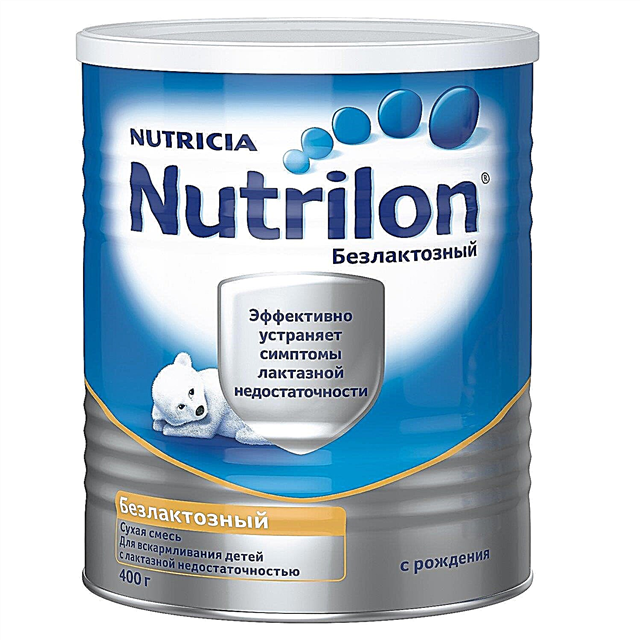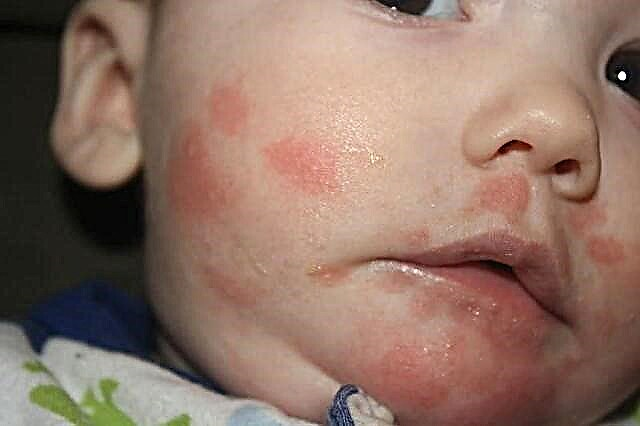Sometimes parents who feed babies with a formula notice that the crumbs cannot digest food. At the same time, the strength of the child's psychological discomfort becomes so strong that the child begins to refuse to eat. Most often, the problem is due to lactose intolerance (the carbohydrate that makes milk sweet). This substance is necessary for the child, so the body's inability to absorb it can lead to serious consequences. The reason is that the body does not produce an enzyme that processes this carbohydrate - lactase.

Lactose Free Blend
Lactose-free formula for newborns makes it possible for a child with an intolerance to this substance not to die of hunger. This method of feeding has a number of significant disadvantages compared to breastfeeding, but if there is no alternative, it is actively used.
You can distinguish lactose-free formulas for babies by the letter combination LF - BL. The permissible level of lactose is no more than 0.1 grams per liter. The composition of nutritional complexes includes proteins and all elements necessary for a child's body.
Important! The decision to take lactose-free mixtures is made by the pediatrician based on the diagnostic results. They cannot be used as a permanent food for the baby (only in the chronic form of lactase deficiency).
What mixtures are classified as lactose-free
If the milk sugar content is less than one tenth of a gram per liter of food, the composition is considered lactose-free. This amount of the substance is permissible, it does not harm the child.
Composition and distinctive features
Lactose is needed for the development of the child's body, so simply removing it from the composition is not enough. It is necessary to find a substitute for it. As it can be used glucose, sucrose (although many doctors recommend avoiding disaccharides in the composition), soy isolate or a complex of some amino acids.

Allergy to lactose in an infant
Lactose is completely absent in soy protein formulas. Some formulas for baby food are made on the basis of goat's milk, which is better tolerated than cow's milk. It contains about 40 percent casein. If the amount of protein is higher, these complexes of baby food are called casein complexes.
Important! Maltodextrin is often used instead of lactose, and palm oil is used as a source of fat. Lactose-free meals also contain probiotics. In all other respects it does not differ from adapted mixtures.
When you need lactose-free baby food
A disease in which the body cannot tolerate lactose is called lactase deficiency. As a result, the baby cannot breastfeed. In this case, the baby needs lactose, since it provides the child with energy. Also, milk sugar promotes the absorption of calcium and iron, prevents intestinal infections, and also takes part in the development of the baby's nervous system.

Baby with lactase deficiency
To digest a useful element, an enzyme is normally produced - lactase. Without it, the sugar from breast milk does not enter the body.
Doctors distinguish two types of lactase deficiency:
- Primary form. It rarely happens. It is characterized by a congenital absence of lactase. Its symptom is severe diarrhea after breastfeeding or artificial feeding based on cow's milk. The disease can appear only if both parents pass on the genes for lactase deficiency to the baby.
- Secondary form. This is a temporary phenomenon that occurs due to damage to enterocytes - cells that produce lactase. Usually the cause is an inflammatory process in the intestines. Often, an allergy to casein is mistaken for deficiency, but the reason for intolerance is completely different.
To understand when to give your child lactose-free formula, you need to learn to distinguish between a deficiency in the enzyme that processes milk carbohydrates from other diseases with similar symptoms.

Sad child with intolerance
You need to contact specialists if there are such signs:
- The character of the stool becomes liquid, acquires a yellowish tint and has a sour smell, and there is also a frothy discharge.
- The baby becomes restless immediately after feeding or during it. A hungry child can pounce on the chest, but almost immediately stops eating, accompanying this action with crying.
- Frequent colic and regurgitation.
- Lack of weight.
Important! If you do not switch to lactose-free artificial nutrition in time, the consequences can be dire: rickets, developmental delay, dehydration, weakening of the body, and even death.
Side effects of the transition
Your baby sometimes has the following side effects from lactose-free infant formula:
- Some types of nutritional complexes (made from soy protein) can cause allergies in crumbs.
- In the long term, lactose-free mixtures provoke colic, diarrhea, and dysbiosis.
- In other cases, breast milk substitute can cause constipation.
The benefits of lactose-free mixtures prevail here over the harm, so doctors prescribe them.
What is low-lactose infant formula
The body of each child is individual, therefore, it is able to assimilate different amounts of milk protein at a time. For children who produce more lactase, low-lactose mixtures are intended, where the carbohydrate content is much - from 0.5 to 1.3 grams per 100 ml. You can distinguish this type of food by the "NL" mark on the package.

Lactose free mixture
Such baby food is introduced into the diet for no more than three months. After that, you need to check again for enzymes. Usually, lactose-free and low-lactose mixtures are taken up to a year, then the symptoms disappear (in the case of the secondary form) and the child can be given milk (if he is still on HB).
The doctor decides whether the child will eat lactose-free or low-lactose baby food. He checks how much carbohydrate the baby can absorb painlessly. You should always give preference to a mixture with a high lactose content, because the child needs sugars, there are not so many energy sources for his body at this age.
Low-lactose baby food is introduced into the diet gradually. First, it is added in two feedings, then the total proportion of the mixture is increased. Then it is taken two additional times. The pediatrician should select the ratio of the usual and dietary mixture. From six months, it is already possible to very smoothly introduce dairy products containing a low amount of lactose into the child's diet: hard cheese, butter, cottage cheese.
Secondary lactase deficiency is most often the result of side diseases, therefore, in addition to lactose-free nutritional complexes, other methods of treatment should be used. Manufacturers often offer mixtures aimed at solving several problems at once.
Thus, some antireflux mixtures, as well as nutritional complexes containing partially hydrolyzed protein, can be considered low-lactose.
Important! A child who feeds exclusively on artificial formula should receive a low-lactose formula, while a baby can take a lactose-free one at the same time with a small amount of milk. You should not completely abandon natural feeding if the child can digest some of the milk sugar.
The composition of low-lactose mixtures is generally the same as that of lactose-free, just the carbohydrate content is higher.
Rating of lactose-free formula for newborns
A list of the best lactose-free infant formula:
- Nutrilon (Nutricia) is lactose free. It is considered the best formula for children with lactase deficiency in the very first days of life that has ever been produced.
- Humana SL. Recognized as the best quality soy protein isolate blend.
- Bellakt BL. The best ratio of price and quality.
- Friso. A cheap blend that is similar in composition to soy milk.
Important! None of them can completely replace natural feeding. Giving lactose-free baby food to a newborn if all is well is not recommended.
List of lactose-free formulas for premature babies
Any infant formula intended for premature babies is lactose-free by default. Here are some nutritional supplements for these babies:
- PRE Nutrilon;
- PRE NAN;
- Friso PRE;
- Nutrilak PRE;
- Similac Neo Sure.
All the formulas on the list are good for premature babies. After gaining 3.5-4 kilograms, it is necessary to consult a doctor and make a decision regarding whether to switch to conventional lactose-free mixtures or not.
Thus, the considered nutritional complexes for infants can be used as a last resort, if they are prescribed by a doctor. A healthy child needs lactose for full development.



